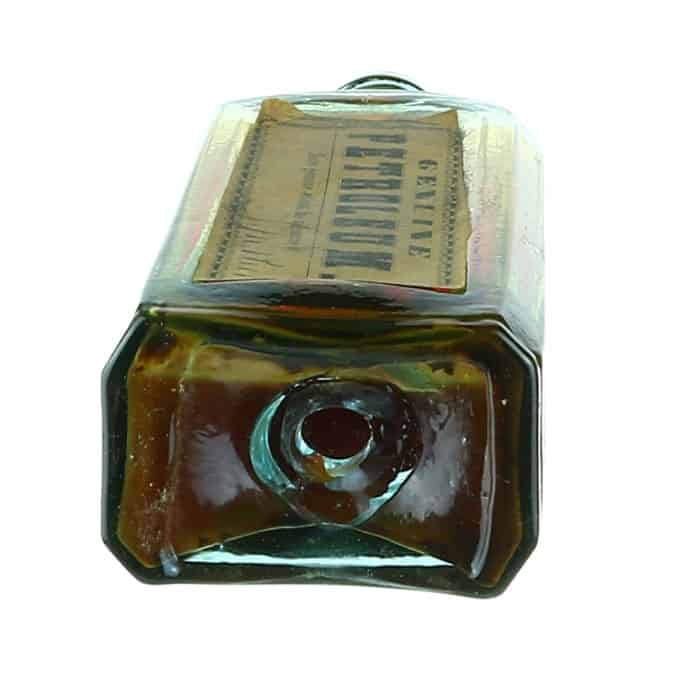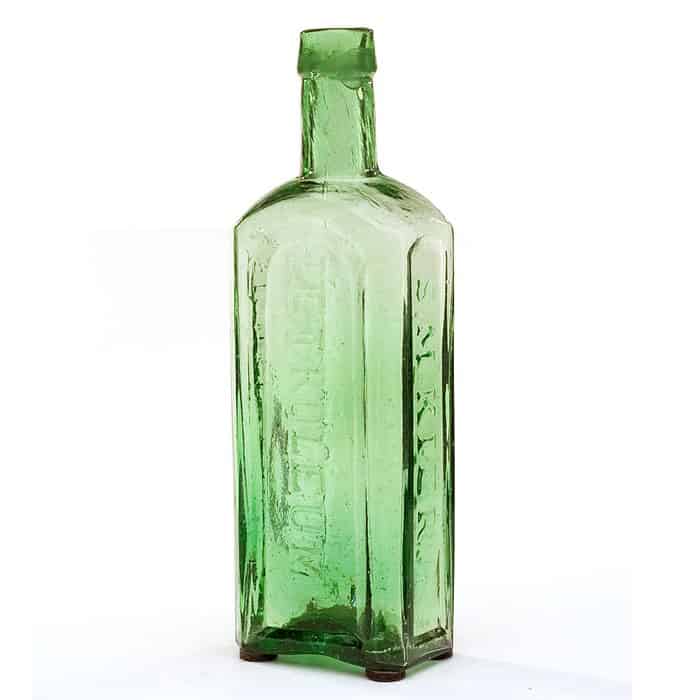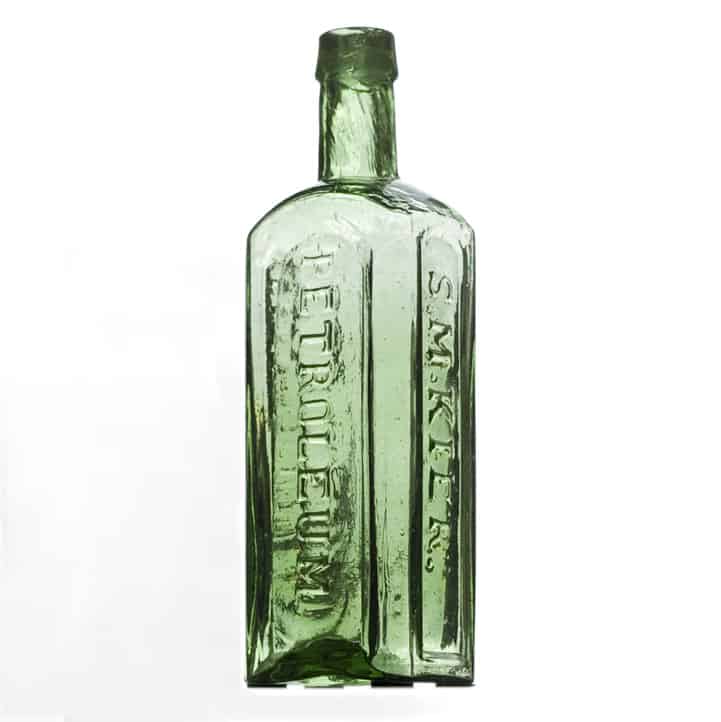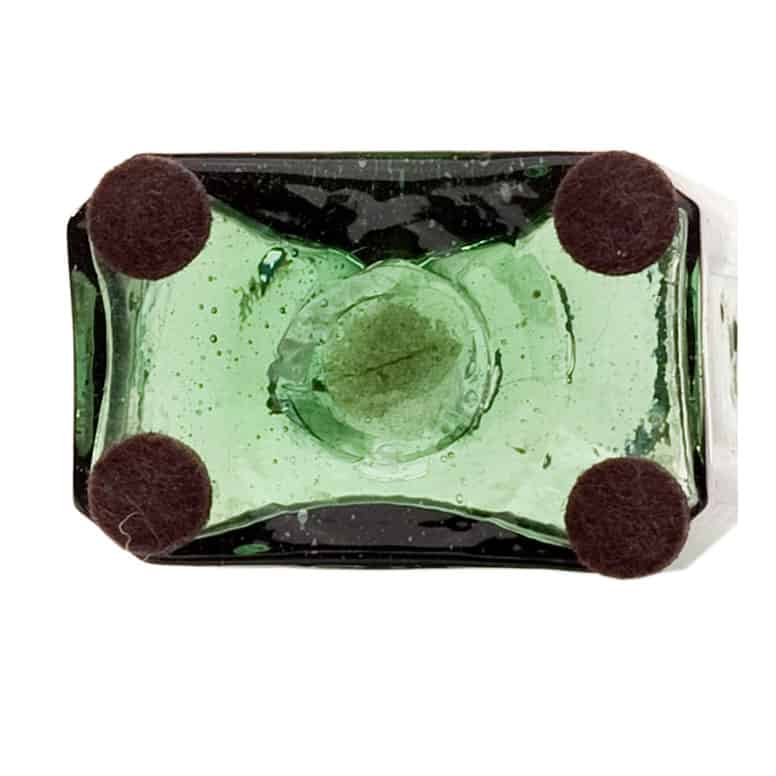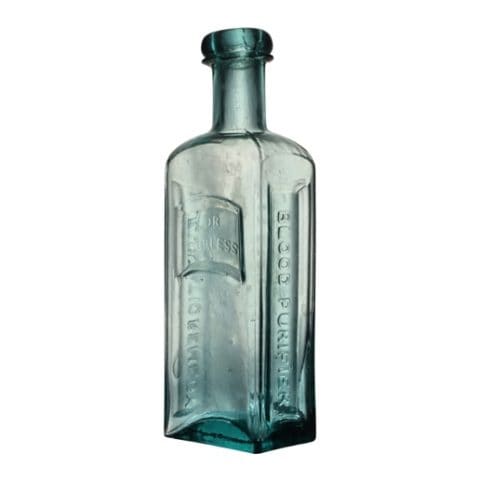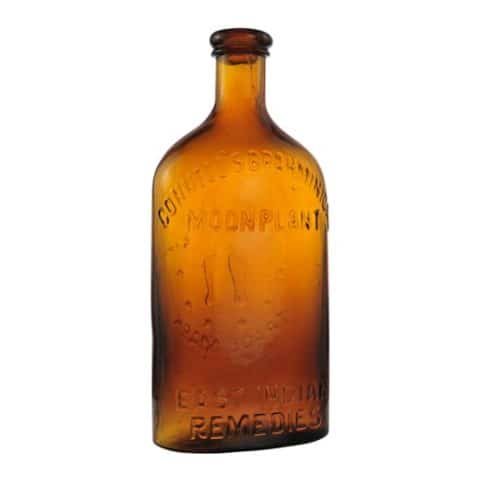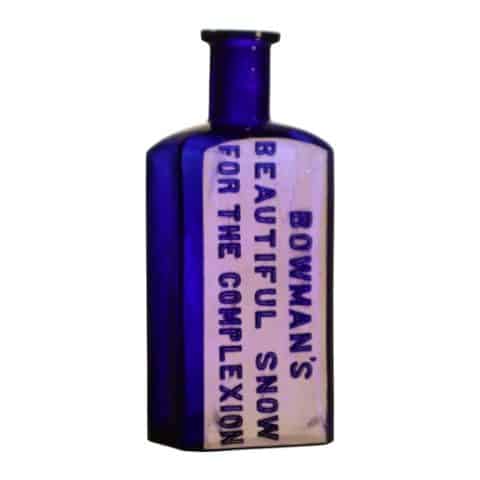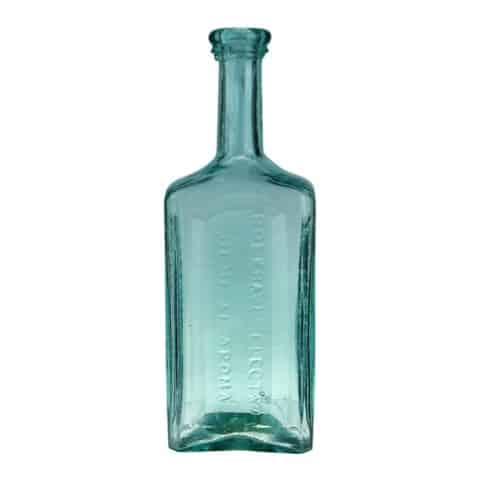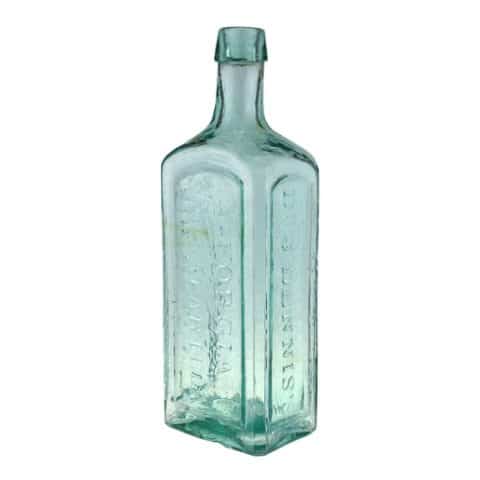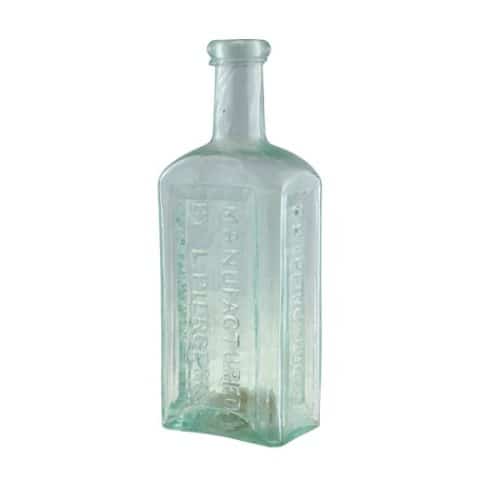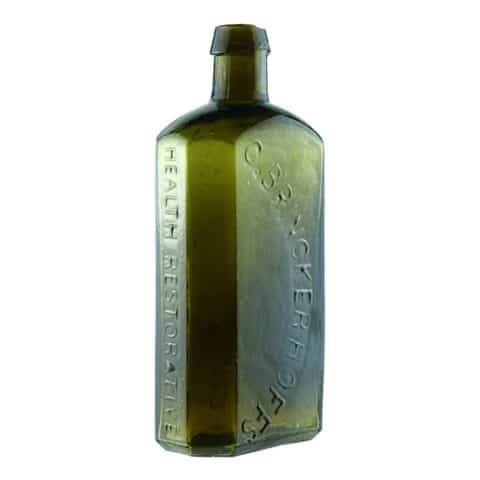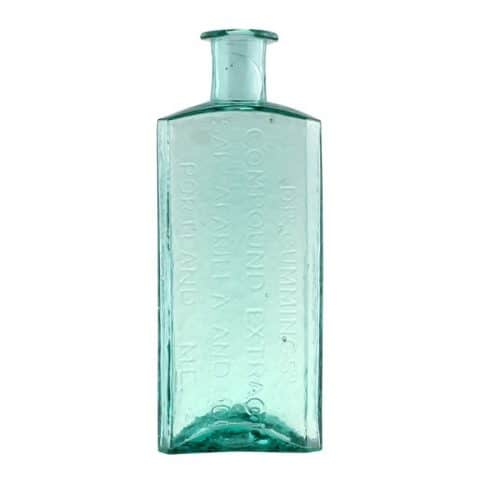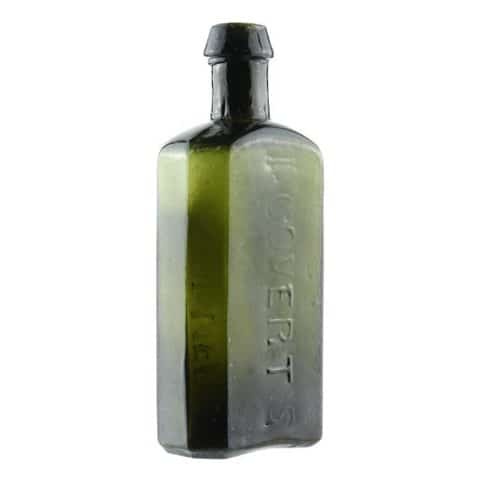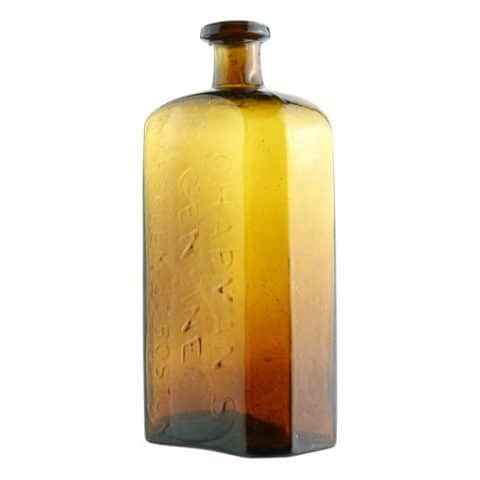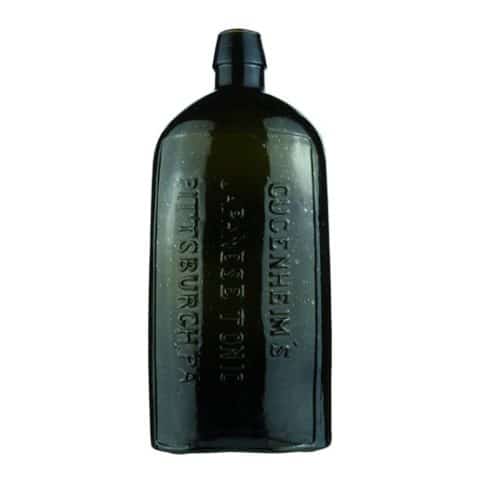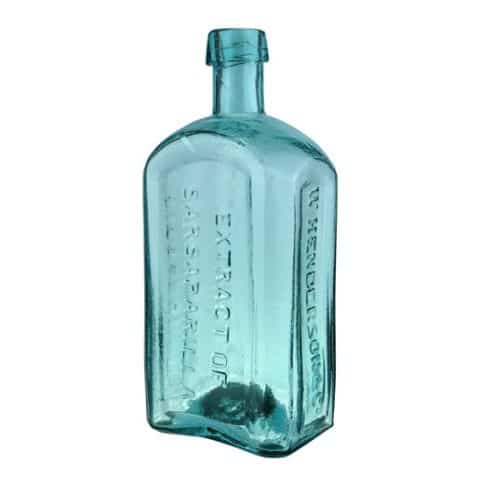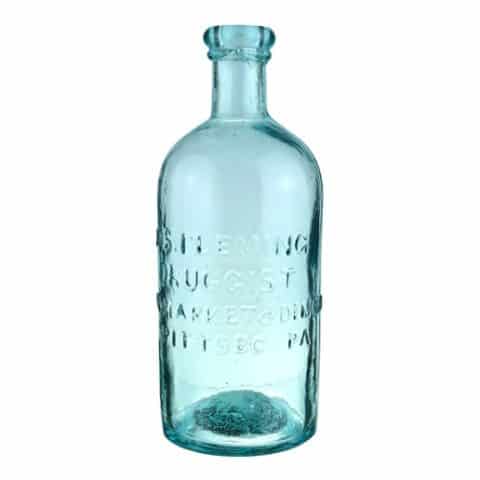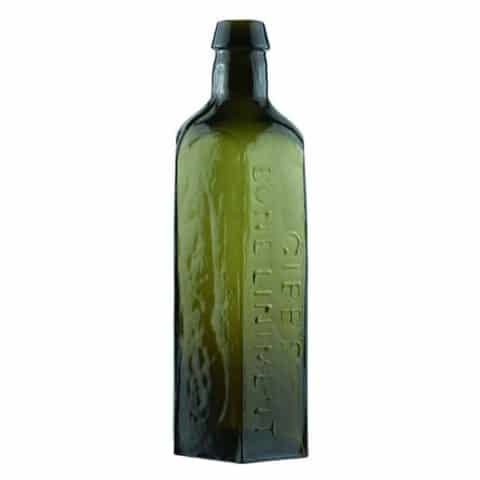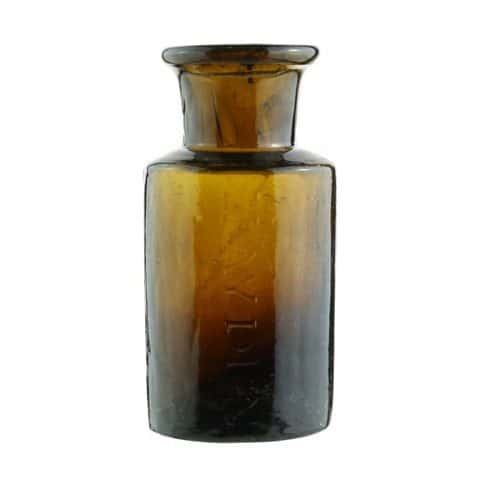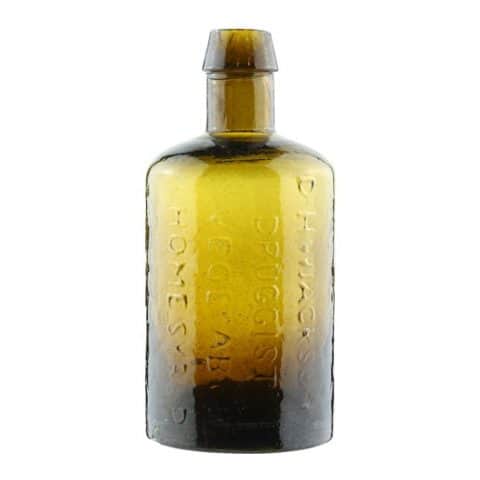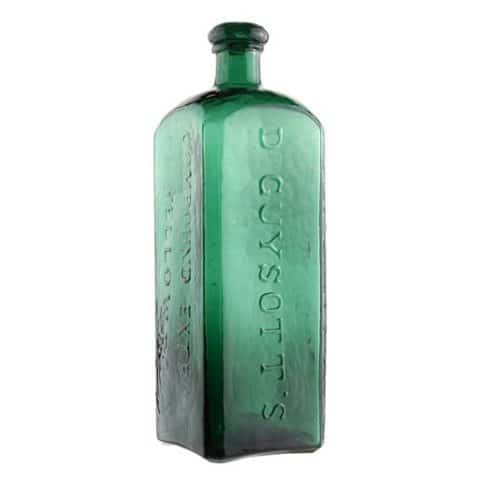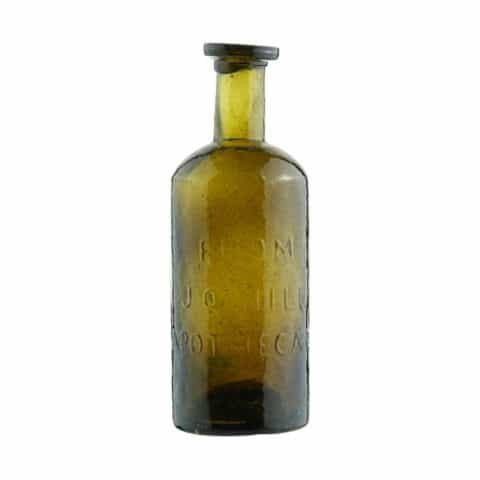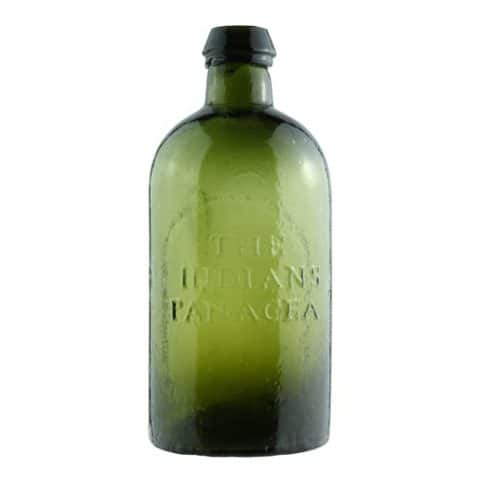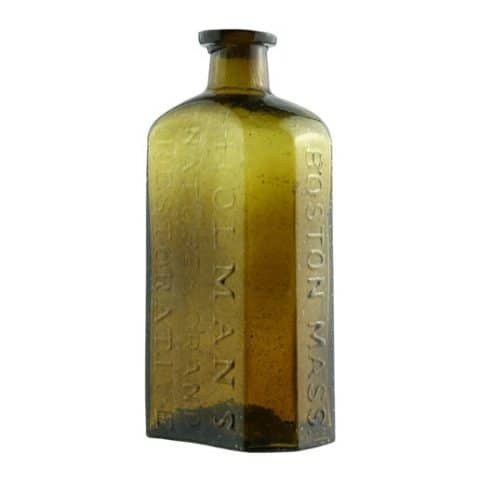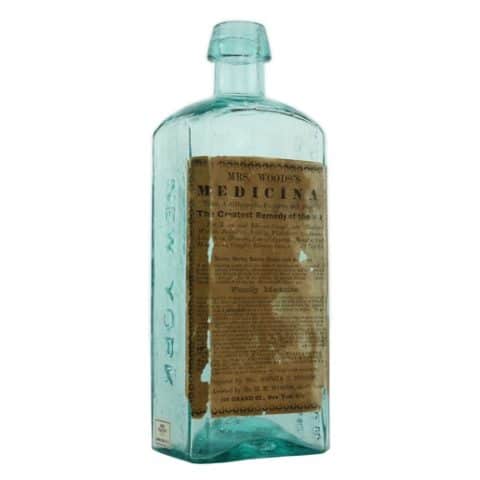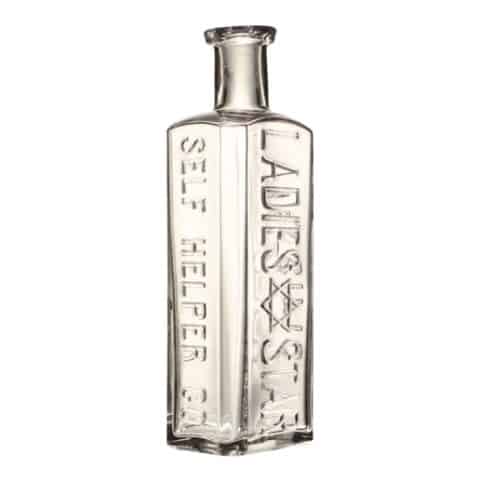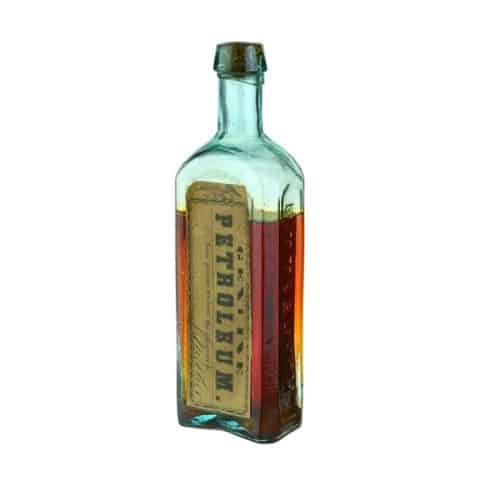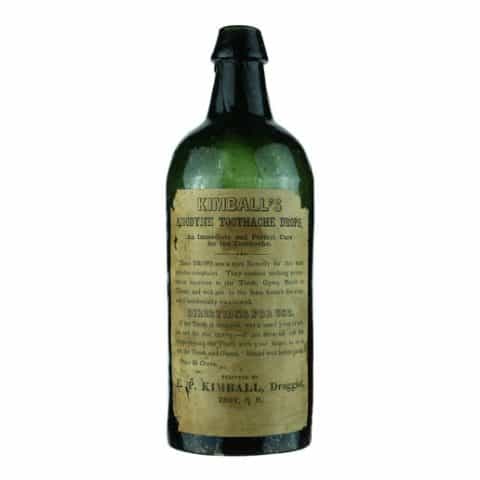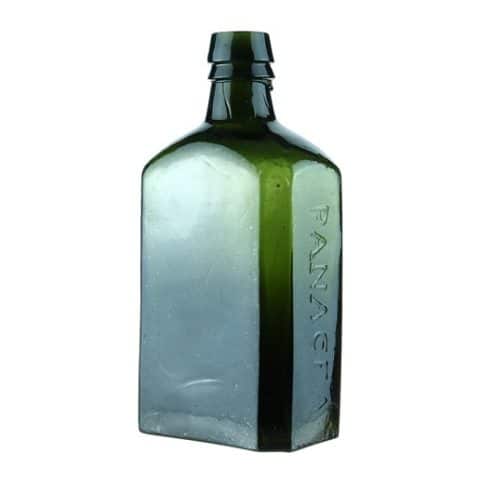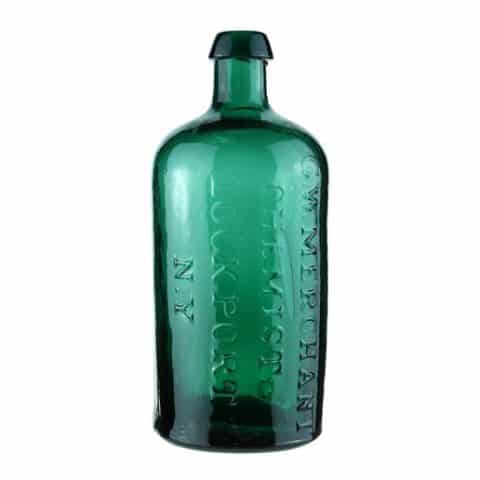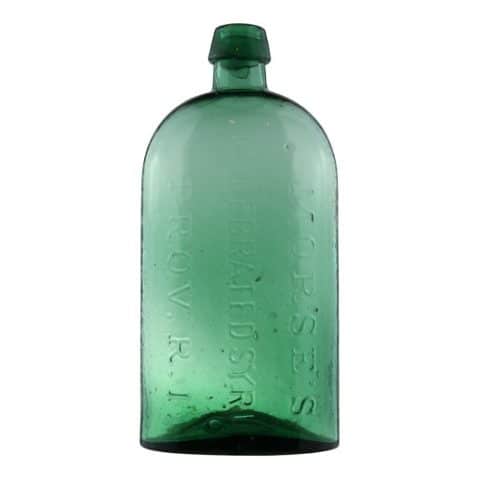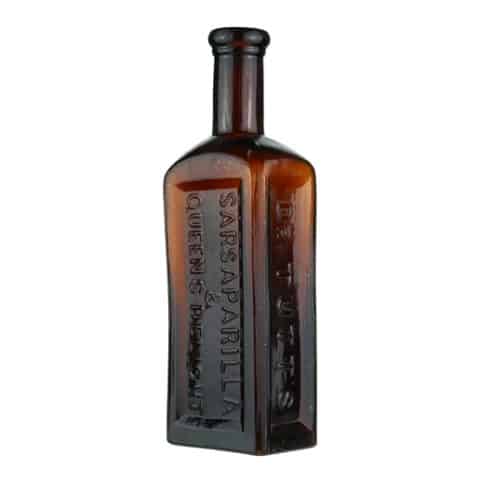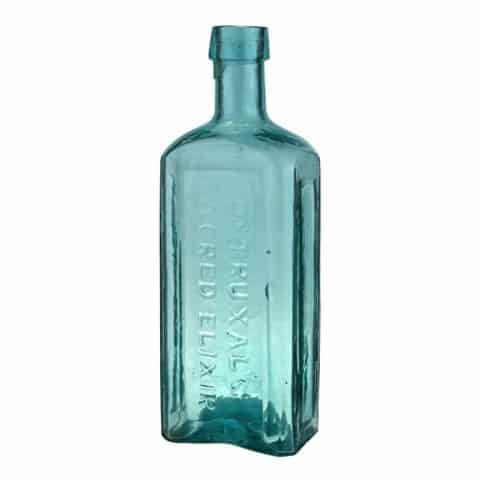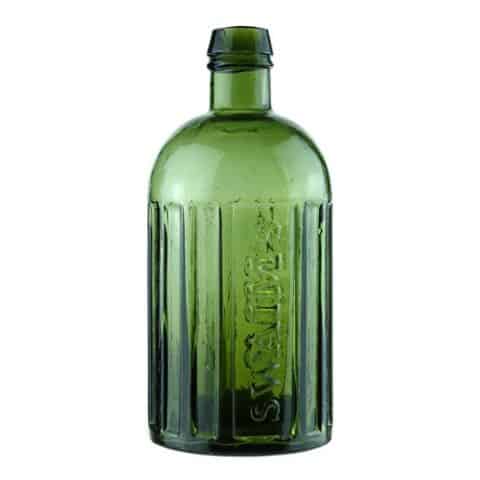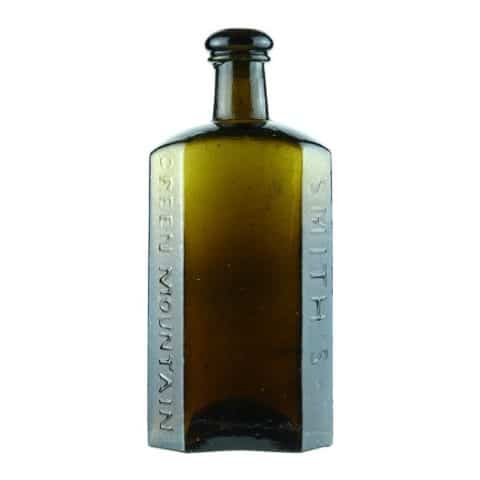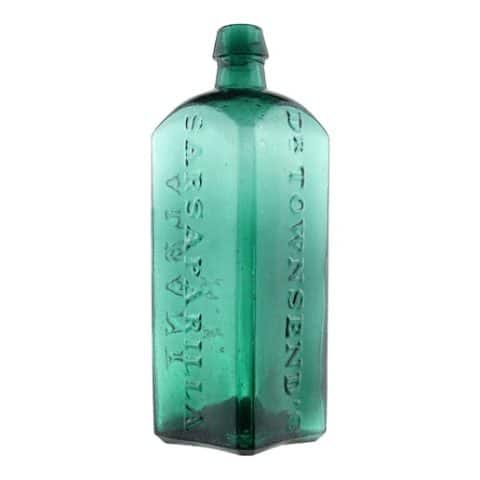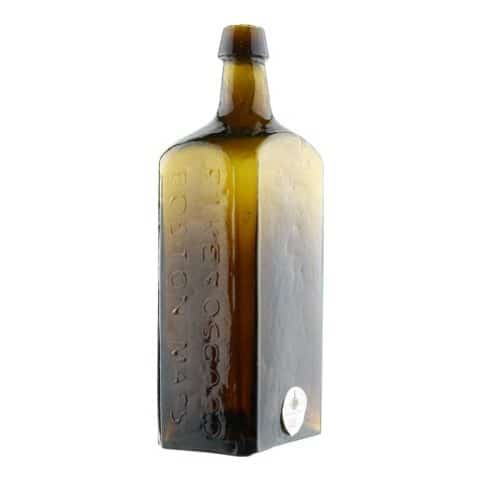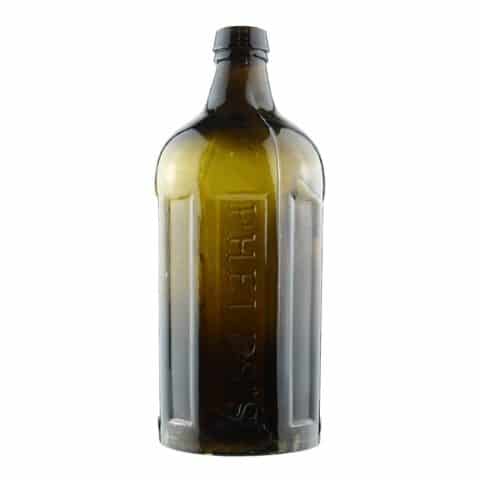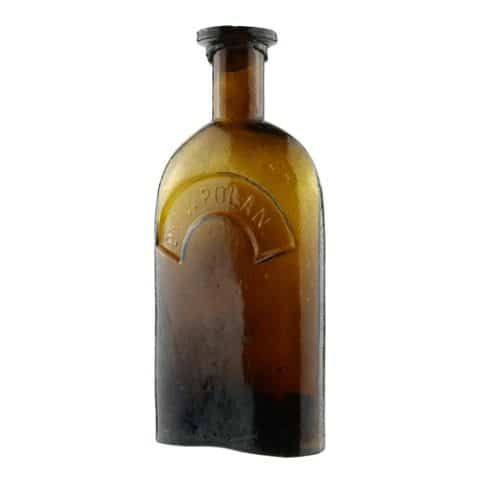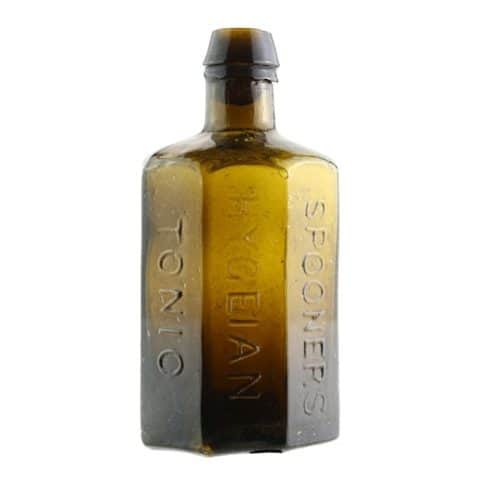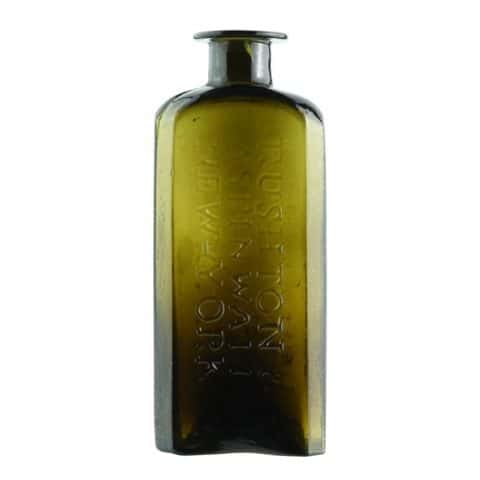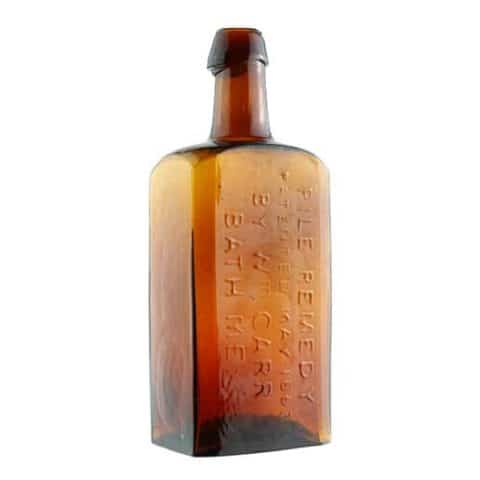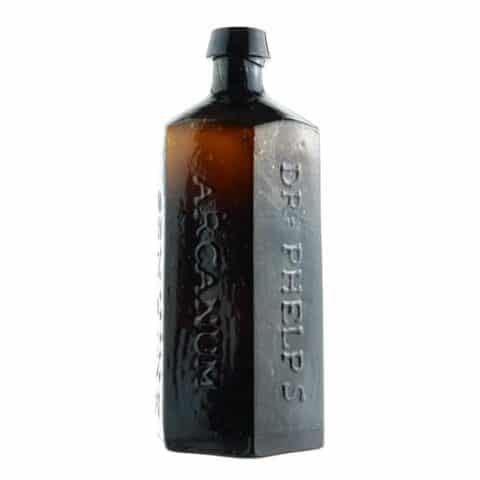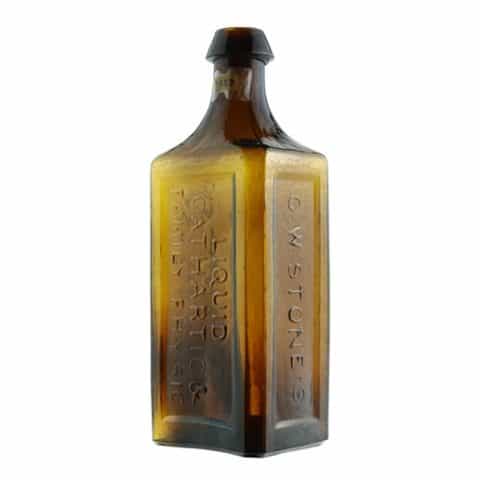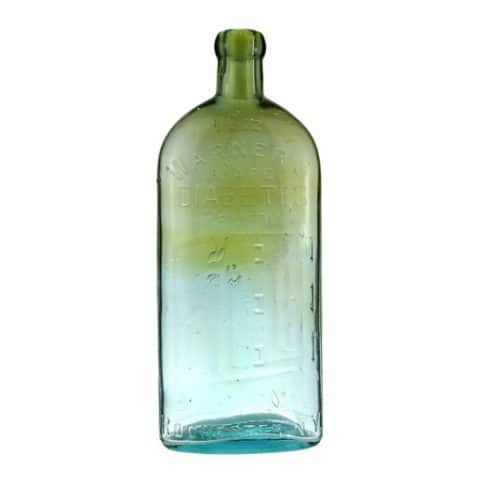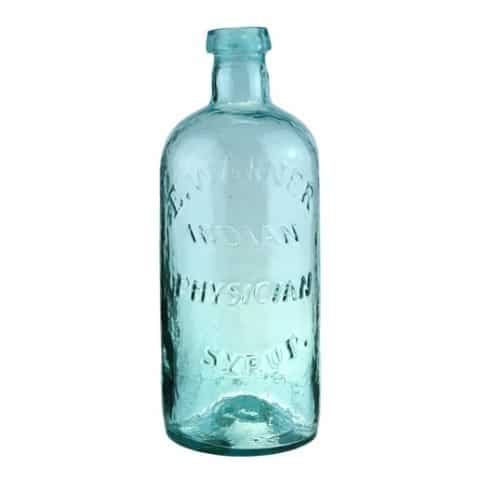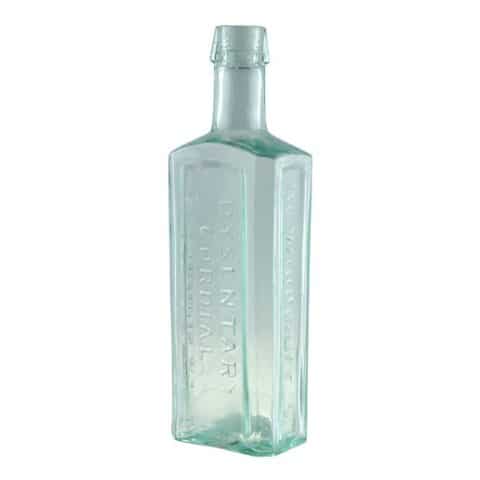Title on Mobile
S. M. Kier.
Petroleum
Pittsburgh
Samuel Martin Kier, Pittsburgh, Pennsylvania
Labeled Rectangular Medicine
Provenance: Chip Cable Collection
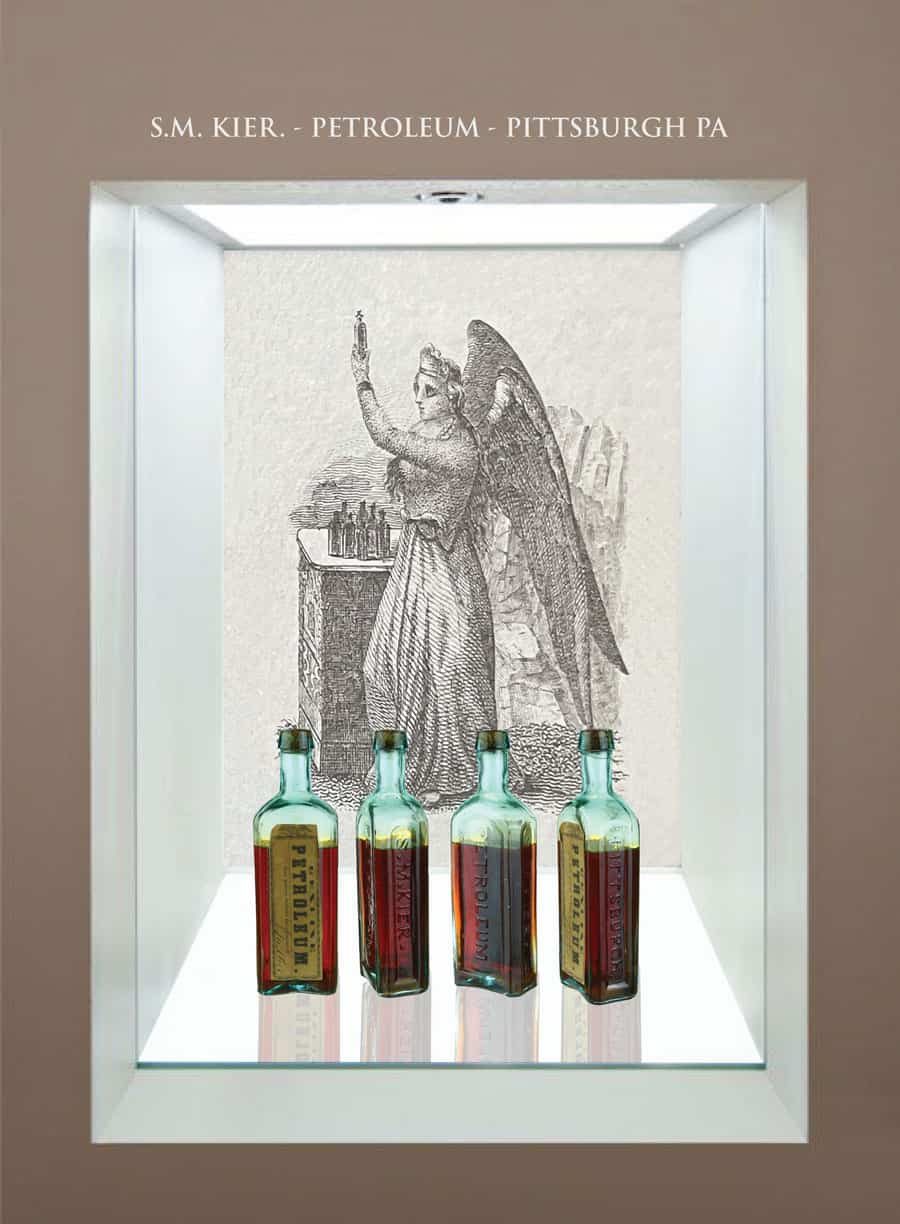
S. M. Kier was a pioneer American inventor and businessman credited with founding the American petroleum refining industry. His commitment and achievements in producing, refining, and trading petroleum during the 1840s to 1850s ignited the Pennsylvanian petroleum boom. He was also the first person in the United States to refine crude oil into lamp oil and has been dubbed the grandfather of the American Oil Industry by historians.
Samuel Martin Kier said that his Kier’s Rock Oil was discovered in 1848 while boring for salt water near the bank of the Allegheny River in Allegheny County, Pennsylvania. At four hundred feet below the Earth’s surface, the soon-to-be medicine or petroleum was pumped up with the salt water that flowed into a cistern. Kier’s marketing said that the Rock Oil floated to the top, and when a quantity accumulated, it was drawn off into barrels and bottled in its natural state without any preparation or admixture. By January 1, 1852, Samuel Kier announced that he was the proprietor and began selling his Kier’s Rock Oil.

Our museum example is a fully labeled 6 ½ inch tall rectangular medicine bottle with arched shoulders and beveled corners. The contents are supposed to be genuine and are contained with a cork. The embossed serif typestyle copy reads from shoulder to base in three recessed chamfered panels. The first thin side panel reads, ‘S.M. KIER.’ while the broad face second panel reads ‘PETROLEUM.’ The third thin side panel reads ‘PITTSBURGH.’ The fourth recessed face panel contains a dark mustard-colored label that reads shoulder to base and centered “Genuine Petroleum” and “None Genuine without the signature of (S. M. Kier signature). The bottle was probably made at a Pittsburgh district glasshouse from 1849 to 1852. The glass color is a medium blue-green aquamarine. The neck is tall with an applied sloping collar mouth, and the bottle bottom has a blowpipe pontil scar. The consignor purchased the bottle at a Shupp’s Grove antique bottle show some years ago.
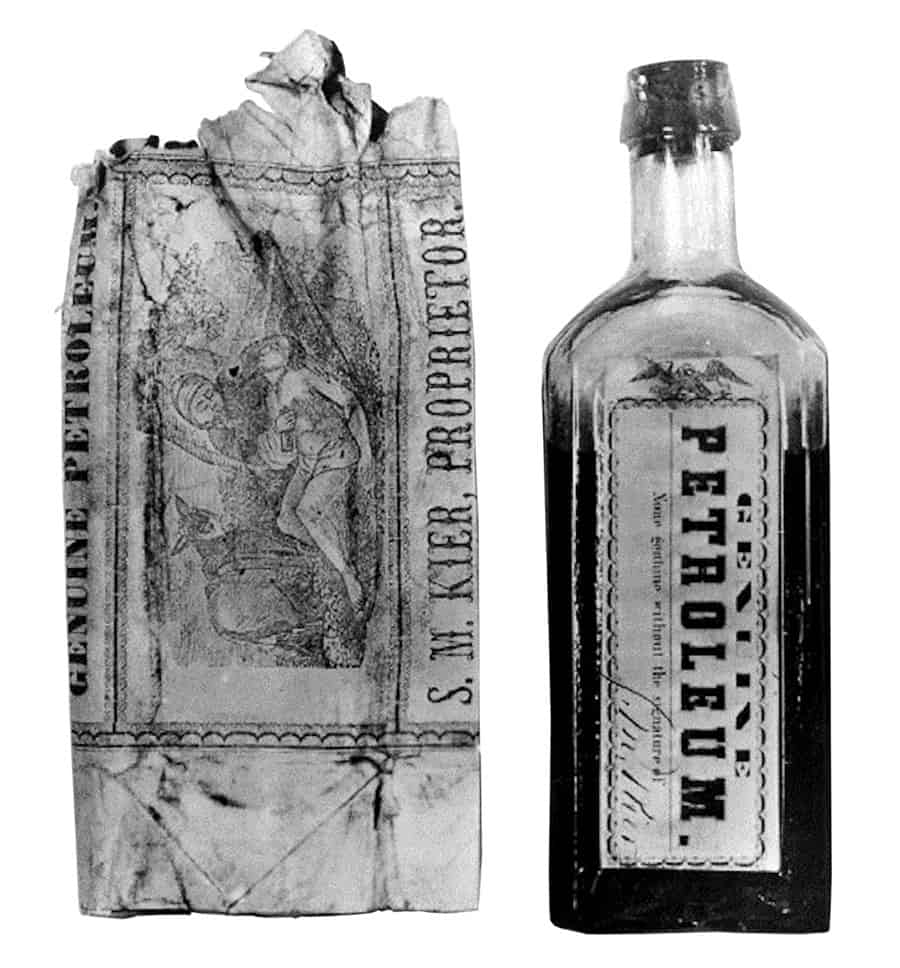
Samuel Martin Kier
Samuel Martin Kier was born in Pennsylvania, east of Pittsburgh, in Conemaugh Township, near Livermore in Indiana County, on July 19, 1813. He was the son of Thomas Kier and Mary Martin Kier. The Kiers were Scottish-Irish immigrants who owned several salt wells around Livermore and nearby Saltsburg.
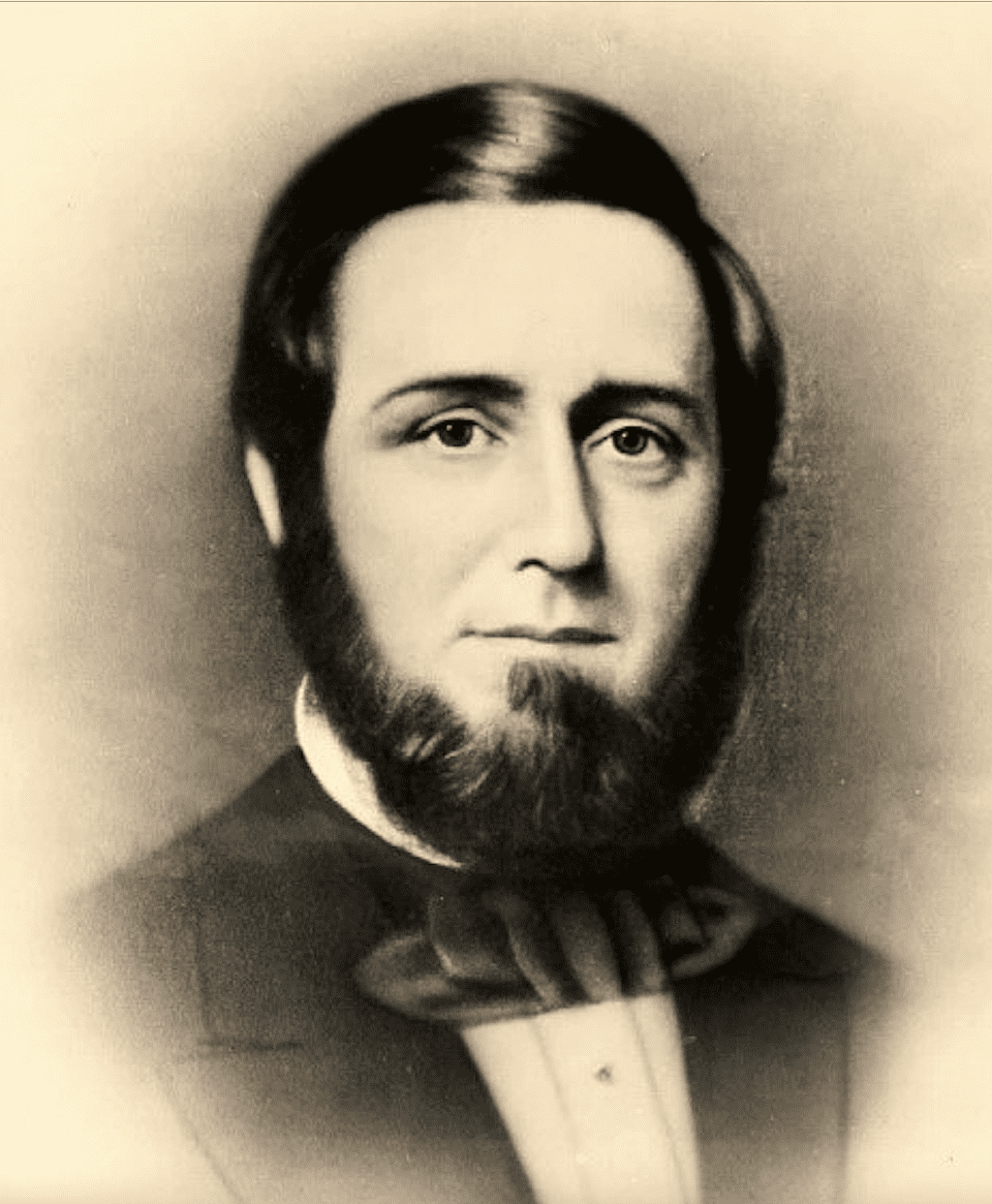
In addition to the salt business, S. M. Kier founded Kier, Royer & Co. in 1838. The company was a canal boat operation that shipped coal between Pittsburgh and Philadelphia. Kier also owned interests in several coal mines, a brickyard, and a pottery factory. He and several other investors, including Benjamin F. Jones, founded iron foundries in west central Pennsylvania. The iron business would be the forerunner of the Jones and Laughlin Steel Company, one of the largest steel producers in America.
In the 1830s, the Kier family was also involved in several businesses, including separating salt from brine wells. In 1837, they leased lands near Tarentum, east of Pittsburgh, along the Allegheny River, which was known for the richness of salt wells.
The region was also notorious for the pernicious infiltration of petroleum, called at the time Carbon Oil, which was a popular rather than scientific term. At the time, there was relatively poor knowledge of the origin and deposition of petroleum in the subsoil, which affected the quality and the value of the salt extracted. By the 1840s, the Kier salt wells were becoming fouled with petroleum. At first, Kier dumped the useless oil into the nearby Pennsylvania Main Line Canal, but after an oil slick caught fire, he saw a way to profit from this otherwise worthless byproduct as the oil collected could be skimmed from the water and used to light the well works at night. Unfortunately, the flame produced was smelly and released an unpleasant smoke as it was burnt raw and not refined.
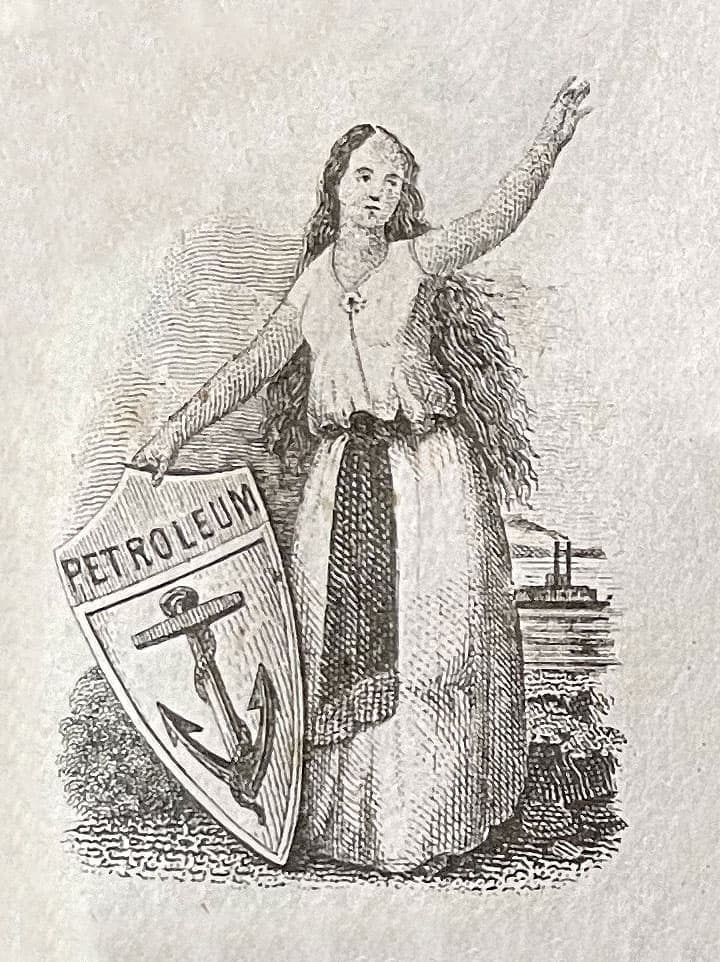
In 1848 S. M. Kier realized a possible utilization of the unwanted liquid petroleum as it could be used as medication. He discovered that American Oil sold the same kind of petroleum from the salt wells in closeby regions as a medicinal tonic. In 1849, S. M. Kier announced that “Wonderful Medical Virtues had been discovered.” By 1852, Kier was selling “Kier’s Rock Oil, “Seneca Oil,” or “Kier’s Petroleum” in rectangular medicinal bottles for fifty cents from his shop in Pittsburgh. He also produced petroleum butter (petroleum jelly) and sold it as a topical ointment. Neither of these products proved to be a commercial success.
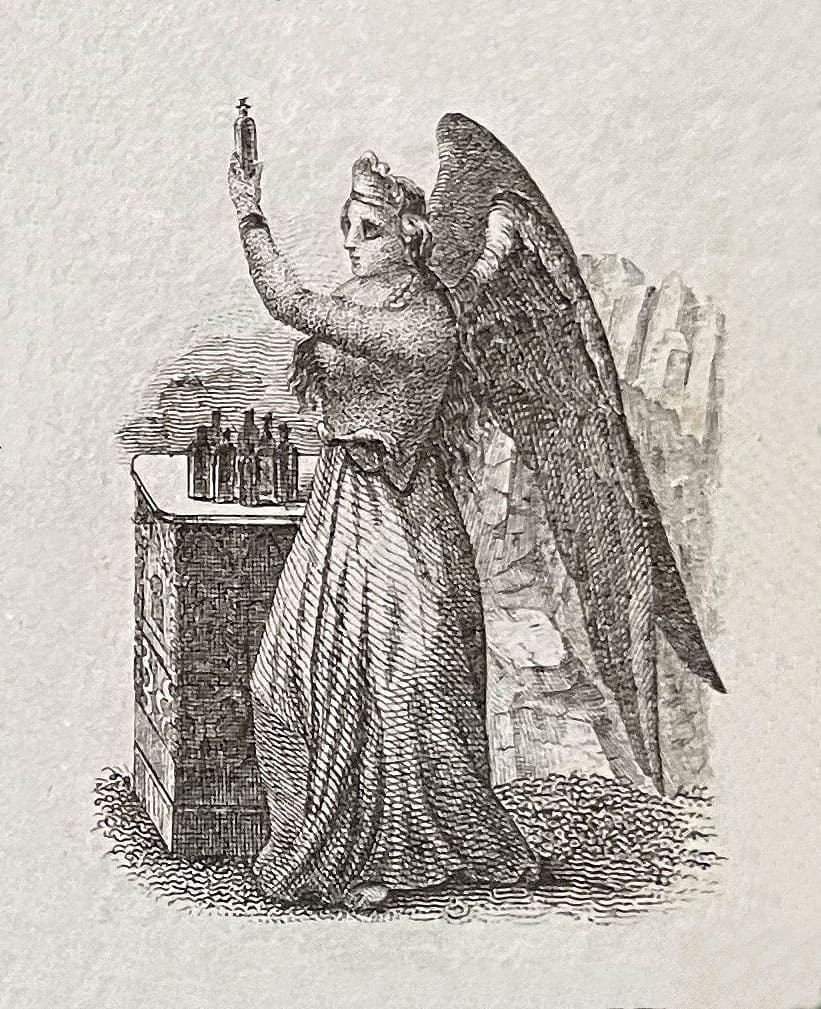
The demand rose for petroleum, so S. M. Kier took the process further by pumping out the liquid using the same mechanical, steam-powered pumps initially used to raise brine waters. Kier was probably not the first to pump a well to produce petroleum. Still, his experience is the one that left the model and inspired the practice of petroleum well production utilizing machines.
Very quickly, in the early 1850s, the S. M. Kier Petroleum medical product lost its appeal with the populace, which attests to the rarity of the bottles. Fortunately, Kier had been seeking other uses for the petroleum from the family brine wells. Kier was aware that only a few years earlier, in 1845, his neighbor and competitor was selling the petroleum from his brine wells to a factory that started to blend it with whale sperm oil from the brain matter of the cetaceous to obtain lubricants for machinery.
This could have been the first commercial, non-medicinal application of petroleum in the United States though the petroleum industry as we know it was not yet established. Oil as a lubricant mixed with other oils was certainly known in Europe. What is important here is that S. M. Kier pursued a different approach and decided to explore how petroleum could help with illumination. He sought advice in Philadelphia from chemist and professor James Curtis Booth (1810-1888), who analyzed petroleum samples supplied by Kier.
Booth advised him that the petroleum could be used as an illuminating agent with an appropriate lamp and said it should first be distilled to get a better result and exploit the raw material qualities best. Booth also provided Kier with a drawing of a basic distillation apparatus. Between 1849 and 1850, Kier started experimenting with distillation and implemented the process of using liquid petroleum as lamp fuel for large-scale production in the United States. Following Booth’s thoughtful advice, Kier conceived the idea to design a lamp that could burn processed petroleum or Kerosene rather than vegetable and animal fats-derived oils. Kier began selling the kerosene, named “Carbon Oil,” to local miners in 1851.
Industrial refining began ten years later, but Kier’s experiments represented the beginnings of the processes of trial and error that preceded the birth of the modern lamp fuel refining technology, detailed in the 1855 pamphlet of Benjamin Silliman, Jr. They confirmed that refining was the only viable way to make of petroleum a commercially valuable mineral.
Kier’s distillation experiments lasted more than a year. In 1851, he started selling his Carbon Oil lamp fuel, which burned with little smoke or odor and had a bright flame while leaving just a minor residue in the lamp. He sold the lamp oil for $1.50 a gallon, which was less expensive than sperm oil, the best oil available at the time. The whale oil was also very pricy and not accessible to the masses.
In Pittsburgh, on the corner of Seventh Avenue and Grant Street, together with John T. Kirkpatrick, Samuel Kier established the first liquid petroleum refinery in the United States, starting with a small one or two barrel production. By 1854, he had a working capacity of five barrels. A historical marker identifying the site reads, “Kier Refinery – Using a five-barrel still, Samuel M. Kier erected on this site about 1854 the first commercial refinery to produce illuminating oil from petroleum. He used crude oil from salt wells at Tarentum.” Besides the development of the refinery, Kier achieved the plan to design and produce a burner for illumination that would work properly with his carbon oil.
Kier proved to be a great businessman, a self-taught technician, and a forerunner in the illumination sector. Unfortunately, he made a mistake when he neglected to patent either his distillation process or the new lamp design. In the following years, S. M. Kier could have become a tycoon cornering the illumination market. He watched as other inventors and businessmen went on to improve his work yielding huge fortunes. Even so, Kier’s income exceeded $40,000 per year, a considerable sum for the time. S. M. Kier successfully continued his production and trade of petroleum as medicine, Carbon Oil, and lamps even after the Pennsylvanian oil boom.
The people of Pittsburgh became the first in the United States to use distilled petroleum for illumination. The same city and the surrounding villages between 1859 and 1865 became the core of the newborn petroleum industrial refining and provided the first bulk of refined oil shipped to Europe and then the other continents after 1861.
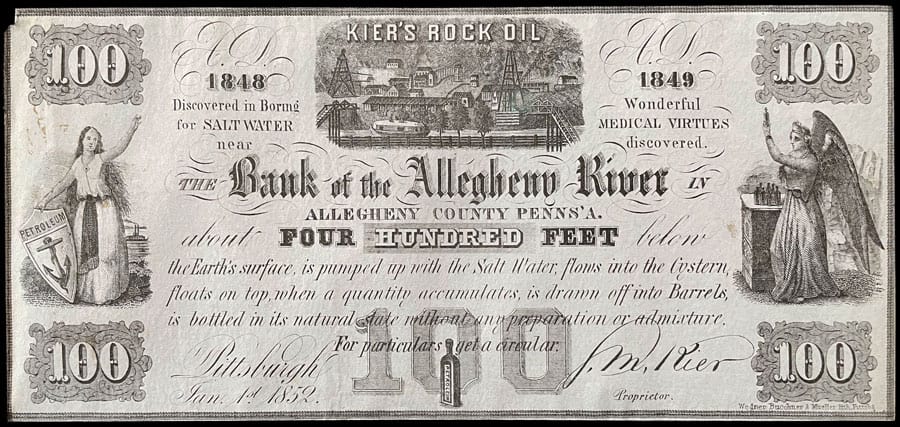
Primary Image: S. M. Kier Petroleum Pittsburgh bottle imaged on location by Alan DeMaison, FOHBC Virtual Museum Midwest Studio.
Support Images: Auction Lot 209: “S.M. KIER. – PETROLEUM – PITTSBURGH PA”, probably a Pittsburgh district glasshouse, 1850 – 1860. Brilliant, medium yellowish green, rectangular with beveled corners, applied sloping collar – blowpipe pontil scar, ht. 6 ½”, sparkling attic mint. A beautiful, exceedingly rare, possibly unique color for this mold. We have not seen another example in this, or similar color. In addition, nice character with plenty of tiny bubbles. Found in the wall of an old home in Waldron, Indiana. Note; a signed letter from the homeowner who found the bottle is his elderly parents home, circa 1870, and how they happened to find it, accompanies the bottle. John Pastor, American Glass Gallery, Auction #30
Support Image: Kier’s Rock Oil certificate. Chip Cable collection.
Support: Reference to Engines of our Ingenuity No. 3178: Samuel Kier by Andy Boyd, University of Houston
Join the FOHBC: The Virtual Museum is a project of the Federation of Historical Bottle Collectors (FOHBC). To become a member.

